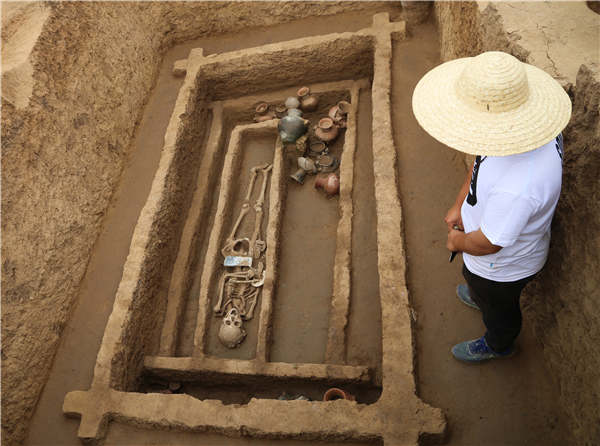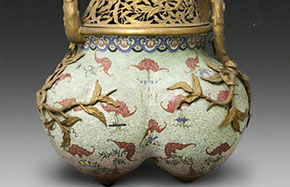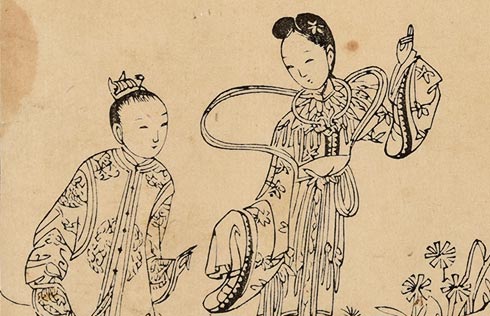Tall ancestors found in Shandong tombs
 |
|
The archaeological site in Jinan, Shandong province, where the skeleton of an unusually tall man was found. Jiang Li / For China Daily |
Archaeologists have found evidence of unusually tall and strong people who lived in East China 5,000 years ago.
Measurements of bones from graves in Shandong province show the height of at least one man to have reached 1.9 meters.
"This is just based on the bone structure. If he was a living person, his height would certainly exceed 1.9 meters," said Fang Hui, head of Shandong University's School of History and Culture.
Since last year, archaeologists have been excavating the ruins of 104 houses, 205 graves and 20 sacrificial pits at Jiaojia village in Jinan, Shandong.
The relics are from the Longshan culture, a late Neolithic civilization in the middle and lower reaches of the Yellow River, named after Longshan mountain.
"Already agricultural at that time, people had diverse and rich food resources, and thus their physique changed," Fang said.
Millet was the major crop and people raised pigs, according to Fang. Pig bones and teeth were found in some graves.
According to the findings, taller men were found in larger tombs, possibly because such people had a high status and were able to acquire better food.
Shandong locals believe height to be one of their defining characteristics. Confucius (551-479 BC), a native of the region, was said to be about 1.9 meters tall.
- Meizhou cultural performances highlight first Cultural and Natural Heritage Day
- Farmers to preserve intangible cultural heritage
- Exhibition displays Chinese ethnic groups' cultural heritages in Madrid
- China's first Cultural and Natural Heritage Day celebrated abroad
- Cultural and Natural Heritage Day activities bloom nationwide

















